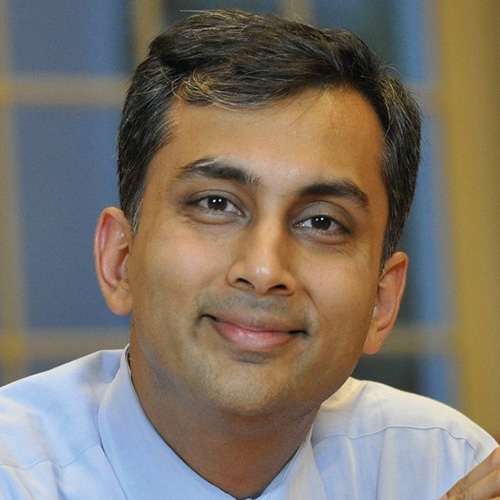“I had always enjoyed stories,” writes Mihir Desai in his new book The Wisdom of Finance, “but becoming an economist made me distrust them.”
This is the economist’s professional ethos: stories are for the fuzzy-headed disciplines, while genuinely scientific fields use mathematical models. And yet some aspects of life, including economic behaviour, are best illuminated by stories, which is why we have literature. This is a theme I have myself developed in a recent book with economist Morton Schapiro, Cents and Sensibility: What Economics Can Learn from the Humanities, where we argue, like Desai, that economists need to supplement their toolkit with modes of thinking developed by reading great novels.
I began to understand economists’ distrust of stories some two decades ago, when I spent a year as a token humanist at Stanford University’s Center for Advanced Study in the Behavioral Sciences in Palo Alto, then dominated by rational choice theory. As soon as economic models could be applied to other social disciplines, everyone seemed to think, these disciplines too could achieve scientific status and do away with narrative.
As one colleague explained to me, you can tell that a discipline has become scientific when it dispenses with stories. Think of Newtonian astronomy: no one would explain the orbit of Mars by narrating where it is moment by moment, since mathematical formulae exhaustively explain its positions. Modern economics was in fact modelled on Newtonian mechanics, and it seemed to follow that while stories can serve as illustrations for purposes of instruction they do not explain anything. If one calls the need for stories “narrativeness”, then some disciplines, like history, are high in narrativeness, while others, like economics, aspire to zero narrativeness.
Desai’s book presents itself at first as a short course in finance using literature, and so I prepared myself for one of those condescending books such as the anthology by Michael Watts, The Literary Book of Economics: Including Readings from Literature and Drama on Economic Concepts, Issues, and Themes (2003). Here we learn that Robert Frost’s poem The Road Not Taken is groping towards the concept of opportunity costs, while Mending Wall can help an instructor get across the concept of property rights. How about Hamlet as illustrating opportunity costs or King Lear as a first attempt at understanding “principal-agent issues”? The assumption is that economists have the answers, and writers, because they express themselves so well, provide nice pictures suitable for those with poor maths skills. The idea that great writers actually know something important does not seem to cross Watts’ mind, or the minds of many other social scientists who use literature.
But Desai is different. For him, issues in finance derive from some much larger aspect of human existence, like risk, which is also treated by great literature. Finance can attune us to these issues, but when we apply its concepts elsewhere they sometimes show their limitations. Given the human condition, issues are much more complex than first appears, and great literature can show us precisely how. And so literature can actually teach economists something, not just provide pretty illustrations of what they already know.
Desai’s chapter “On Value” begins with a discussion of the New Testament parable of the talents, which tells the story of a rich man going on a journey who entrusts his wealth to three servants. When he returns and asks for an accounting – as God will do at the Last Judgement – he finds that the one to whom he entrusted five talents and the one to whom he entrusted three talents have managed to double them, but the one to whom he entrusted one talent just buried it in the ground out of fear. He rewards the first two and banishes the third.
After drawing obvious (and not so obvious) conclusions about investments, Desai asks some more perplexing questions. We all have “talents” in the other sense – this parable may be the origin of the usual meaning of the word “talent” today – and perhaps we should we look at them not as handy things to use as we like but as gifts not of our own making that we are morally bound to develop. As Desai puts it, “we are stewards of those gifts and must make the most of them”. He then turns to Samuel Johnson, who was perpetually plagued by guilt for not making the most of his gift. His poem On the Death of Robert Levet considers a simple man, supported by Johnson, who through his constant care and affection brightened the lives of those around him and so demonstrated “the power of art without show”. Goodness is prosaic, and Johnson chose to illustrate the point by invoking the parable of the talents:
His virtues walk’d their narrow round,
Nor made a pause, nor left a void:
And soon th’ Eternal Master found
The single talent well employ’d.
John Milton also feared that, as he went blind, he would fail to make the most of his talents, and in the famous sonnet on his blindness, When I Consider How My Life is Spent, he laments that “one talent that is death to hide” is now lodged within him useless. Desai explains how Milton answers this parable with another, about the workers in the vineyard, who start to labour at different times but at the end of the day get paid the same. The readiness to serve also has value. “God does not need/Either man’s work or His own gifts…They also serve who only stand and wait.”
In Desai’s chapter on “Failing Forward”, the case of the American Airlines bankruptcy, and of the CEO who long refused to file for it because he believed in the moral obligation to honour one’s commitments, raises issues not only in finance but also in ethics more generally. “Bankruptcies are evocative”, suggests Desai, “because they are about our attitude toward our commitments and how conflicting obligations should be navigated.” As he glances at Aeschylus’ tragedy Agamemnon and the classic Indian epic, the Bhagavadgita, he shows why such questions have no easy solutions. One needs not a formula but good judgement, which is the product of experience – and great literature – sensitively reflected on. Desai concludes: “Bankruptcy is a process that can’t be approached with a simple moral frame or set of decision rules. Instead, it is a process of navigating deeply felt obligations – much as a good life is.”
In his afterword, Desai considers C. P. Snow’s classic essay on The Two Cultures, which deals with the radically different modes of thinking in the humanities and the hard sciences. “When these two senses [of the world] have grown apart, then no society is going to be able to think with wisdom,” Snow pleads. If we substitute economics and finance for the hard sciences, the same mutual incomprehension obtains today. Desai takes a real step towards creating a dialogue of disciplines. Most of the time he succeeds. If only more people – whether financiers or academics – could combine with such finesse economic knowledge and an appreciation of the human condition!
Gary Saul Morson is Lawrence B. Dumas professor of the arts and humanities at Northwestern University.
The Wisdom of Finance: Discovering Humanity in the World of Risk and Return
By Mihir A. Desai
Profile Books, 240pp, £12.99
ISBN 9781788160049
Published 31 August 2017

The author
Mihir Desai, Mizuho Financial Group professor of finance at Harvard Business School, was born in Mumbai, soon moved to Hong Kong but grew up, from the age of eight, in Madison, New Jersey. He believes that he “benefited enormously from these moves, as they provided for a great education, a solid American identity and a deep appreciation for what the rest of the world offers”.
For his first degree at Brown University, Desai majored in history, “a great discipline for learning how to write and for engendering a more subtle sense of causality”. He has always, he says, been “a voracious consumer of high and low culture. I grew up feasting on books, television and movies equally, and that pattern continued until I became a professor…As an economist, you are trained to distrust stories, but writing The Wisdom of Finance made me realise again how we create meaning out of narratives.”
With a PhD in political economy, Desai says he is “fully indoctrinated” in abstract mathematical models and produces work “built on neoclassical theory and various quantitative empirical methods. The book is not a reaction against that tradition but a complement to it. The rigour and formalised methods of economics and finance are not opposed to our humanity but actually related to it.”
Yet today, in Desai’s view, “much of finance has become about value extraction rather than value creation. The book attempts to use the humanities to demystify finance for outsiders and to humanise finance for practitioners. The discipline is reinventing itself, but I think in unfortunate ways. We have become far too enamoured of the latest behavioural bias that psychology purports to have found and randomised trials and all-too-subtle econometric methods. In the process, we’re losing the intellectual coherence of the discipline and the ability to address the really large and pressing problems of the world.”
Matthew Reisz
POSTSCRIPT:
Print headline: Look to literature to understand
Register to continue
Why register?
- Registration is free and only takes a moment
- Once registered, you can read 3 articles a month
- Sign up for our newsletter
Subscribe
Or subscribe for unlimited access to:
- Unlimited access to news, views, insights & reviews
- Digital editions
- Digital access to THE’s university and college rankings analysis
Already registered or a current subscriber?




